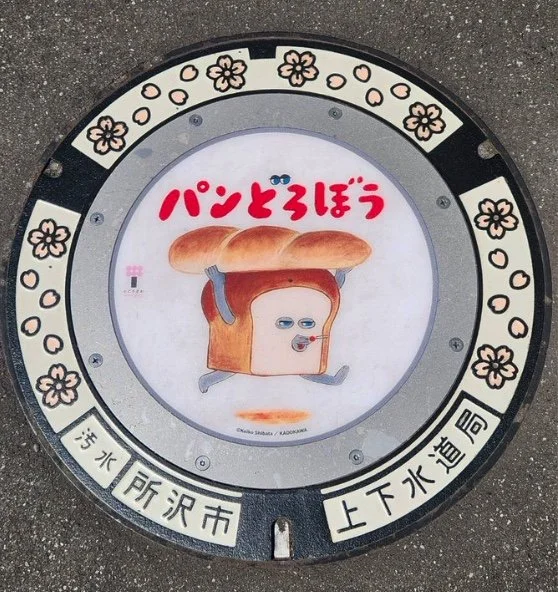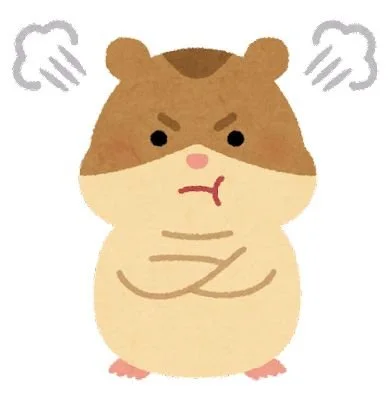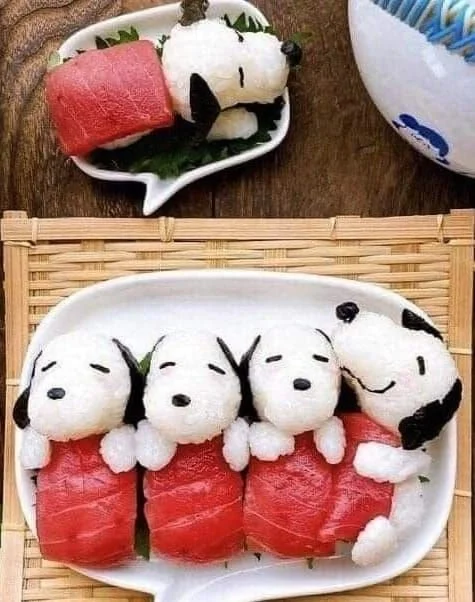🎀 More Than Cute: How Kawaii Culture Defines Modern Japan
Recently, I wanted to send a gift from Japan to a friend’s family in the U.S.—a family who continues to support us in so many ways. They have adorable six-year-old twin girls, and I wanted to find something meaningful and uniquely Japanese. That’s when I decided on a “kawaii” (cute) gift.
As I browsed through shops and online stores, I was amazed. Japan’s kawaii items have evolved—they’re more imaginative, more detailed, and in many cases, true works of art. Kawaii has become a way Japan communicates—visually, emotionally, and even socially.
Truthfully, I don’t naturally gravitate toward cute things myself (though I do adore dogs). But over time, I’ve come to appreciate kawaii as more than just a style. It’s a kind of cultural language—one that softens hard edges, offers comfort, and builds connection.
And for anyone coming to Japan, living here, or working with Japanese people, understanding kawaii can be surprisingly helpful.
What This Blog Covers:
What Does “Kawaii” Really Mean?
Where You’ll See Kawaii in Japan
Kawaii as a Communication Tool
Kawaii in Tech and Professional Spaces
Kawaii in Business and Society – It Sells!
A Foreign Perspective
Cross-Cultural Comparison: Japan and the U.S.
Wrap-Up
1. What Does “Kawaii” Really Mean?
Most people translate kawaii as “cute,” but in Japan, the meaning goes far beyond that. Kawaii implies innocence, softness, warmth, and emotional comfort. It’s not just an aesthetic—it’s a mindset. Something that makes you feel safe, soothed, or quietly delighted.
It functions as a kind of emotional design—meant to reduce stress and increase connection in daily life.
2. Where You’ll See Kawaii in Japan
Once you start noticing it, kawaii is everywhere—and not just in toy stores or teen fashion.
🍱 Bento boxes with rice shaped like animals
🖍 Stationery in soft pastels with gentle characters
🚻 Public signs that use cuteness to encourage good manners (like pet waste etiquette)
🎂 Cooking and presentation: bear-shaped bread, animal-themed cakes, adorable lunchboxes
📺 Animation and game characters like Pikachu or Doraemon
Kawaii is integrated into everyday life as a way to make things more approachable and emotionally accessible.
🧁 Glossary of Kawaii Culture
Kawaii (かわいい): Cute, charming pretty、lovely、adorable
Yuru-chara (ゆるキャラ): Local mascots with a “loose” or quirky feel (e.g., Kumamon)
Kimo-kawaii (キモかわいい): Creepy-cute (e.g., characters that are ugly or weird—but adorable)
Yami-kawaii (病みかわいい): Dark-cute, often combining cuteness with sadness or vulnerability
3. Kawaii as a Communication Tool
Kawaii is a form of communication.
It acts as an emotional shorthand, helping people connect in a non-verbal, culturally intuitive way. In Japan, where direct confrontation or overt emotional expression is often avoided, kawaii provides a softer, more socially accepted outlet.
✅ What Kawaii Really Does:
A non-verbal tool for emotional connection
A social buffer that eases tension and creates psychological breathing space
A way to invite closeness through warmth, not authority
✅ Kawaii in Digital Communication
Emoji and stickers are classic examples of kawaii in everyday digital life.
Even when you’re upset, you might send a sticker like this one—it softens the emotion while still expressing how you feel.
These images function as emotional signals. A gentle bear or sparkly cartoon helps you say “I’m tired,” “I’m annoyed,” or even “I’m sorry,” in a socially smooth way.
✅ Real-Life Examples from Public Institutions
Even government institutions use kawaii to communicate complex or serious information.
For instance, Japan’s Financial Services Agency (FSA) created a kawaii-style website called “NISA Kissa”, using charming characters to explain the NISA investment scheme—a government-sponsored tax-free savings plan. The illustrations make the content feel accessible, even if you’re not financially literate.
👉 NISA Kissa by FSA
Similarly, when the Minato Ward Office in Tokyo sent out information about MyNumber card renewals, they used cheerful mascots and cartoon visuals to soften the message.
👉 Minato Ward MyNumber Info
These are strategic design choices that reduce friction—even when the topic is bureaucratic or financial.



4. Kawaii in Tech and Professional Spaces
🤖 Real Story: When “Cute” Meets Technology
At an international medical congress I once supported, there was a proposal to use a 3D virtual character as the session moderator—a high-tech way to modernize the event.
Given the formal nature of the gathering, I imagined the character would look like a professional academic: a suit, glasses, a calm and composed voice.
But when I saw the actual demo, I was stunned. The avatar was a tall, slim, kawaii-style female character, straight out of a video game. She had a soft, slightly babyish voice and a distinctly playful presence.
At first, it felt like a culture shock. But I soon learned that the 3D creators were from the gaming and anime world—where kawaii aesthetics are second nature. In that context, their design made perfect sense.
It made me realize something: even in high-level, formal settings—even in robotics or AI—Japan doesn’t hesitate to make things kawaii. Whether it’s a moderator avatar or a digital assistant, kawaii isn’t seen as unprofessional. It’s seen as engaging.
When it comes to cuteness, Japan doesn’t dilute it—it elevates it. It’s not a gimmick. It’s part of how things work.
To my surprise, the congress convenor’s first reaction was, “This cute character is way better than some scruffy old man in a suit.”
Well then—looks like even the most serious academics have a soft spot for kawaii.
✅ Real-World Examples: Kawaii in Tech
Here are just a few examples of how Japan continues to integrate kawaii into even the most advanced digital designs:
🌟 Romi (ロミィ) – A Talking Home Robot
🌟 Lovot (ロボット)―Love+Robot
🌟Temi - A mobile guided tour with automatic narration
🌟aibo – Robot dog
5. Kawaii in Business and Society – It Sells!
Kawaii plays a powerful role in marketing, branding, and social identity.
Think of Kumamon, the bear mascot of Kumamoto Prefecture, who helped generate billions of yen in regional product sales. Or Hello Kitty, who appears on everything from trains to credit cards—and still has global appeal.
Another example: Suumo
a real estate search platform in Japan, uses a green, fuzzy mascot that looks more like a mochi than a marketer. Why? Because it works.
People are more likely to click, explore, and feel comfortable engaging with something that feels warm, friendly, and harmless—even when the actual product (like property) is complex or expensive.
“Cute characters lower psychological resistance and increase brand touchpoints—even in industries that aren’t inherently fun or emotional.”
According to PwC Japan, people who engage with kawaii content tend to report higher levels of happiness. The Japanese government also leverages kawaii through its Cool Japan initiative—a cultural diplomacy strategy that promotes anime, design, fashion, and character content around the world.
If kawaii can influence not only emotional well-being but even leadership styles and working style, that’s truly remarkable.
👉 Source
6. A Foreign Perspective
Real story:
My American husband’s first reaction to kawaii was bewilderment. When he saw Snoopy sushi, he paused and asked, “Wait… is this food?”
For him—and perhaps many others raised in a more “masculine” or utility-first culture—kawaii looked childish or overly decorated. His response wasn’t negative, just surprised. And to be fair, many people from abroad may share that initial confusion.
7. Cross-Cultural Comparison: Japan vs. U.S. Perspectives on Cuteness
Let’s explore some possible cultural contrasts that help explain how kawaii is perceived and used—not as judgments, but as thoughtful comparisons.
🇯🇵 In Japan:
Emotional Regulation: In a culture where open emotional expression is often tempered, kawaii offers a gentle, non-verbal outlet.
Escapism: In high-pressure environments, kawaii provides mental relief—a soft, comforting distraction.
Non-Confrontational Aesthetics: Kawaii aligns with a cultural preference for harmony, subtlety, and gentleness.
Social Harmony: Cuteness makes people—and institutions—feel more approachable, softening messages or rules.
🇺🇸 In the United States:
Strength and Individualism: Traits like assertiveness, independence, and self-sufficiency are often emphasized, and softness may be seen as vulnerability.
Visual Culture: Branding and politics tend to highlight “strong,” “bold,” and “powerful” imagery—rarely “cute.”
Self-Assertion for Women: Women are often encouraged to project confidence and competence, which may make kawaii aesthetics feel childlike or inappropriate in professional settings.
Cuteness = Vulnerability?: There’s sometimes a perception that cuteness implies naivety or a lack of seriousness.
Cuteness in Pop Culture: Cute characters like Snoopy or Olaf are beloved—but typically associated with children or nostalgia, rather than adult culture.
Of course, these are broad cultural tendencies based on my observation. People in both countries express themselves in diverse ways.
But understanding these contrasts can help you better navigate kawaii culture
7. Wrap-Up
Kawaii is something you can use—and enjoy.
If you love it, embrace it. And even if you’re not naturally drawn to cuteness, kawaii can still be a powerful tool— for communication, branding, or even team-building.
One CEO I worked with was a brilliant, highly analytical person—not exactly known for being a “people person.” But I was surprised to see that he often used cute stickers in personal messages.
I also remember a male colleague who brought back adorable character-themed sweets from his summer vacation. Everyone loved them. It instantly lifted the mood in the office.
That’s the thing—kawaii is deeply embedded in Japanese culture, in ways both subtle and sincere.
So why not use it—or simply enjoy it?
💬 What Do You Think?
Have you experienced kawaii culture in Japan—or elsewhere?
Did it surprise you, comfort you, or maybe even confuse you at first?
I’d love to hear your thoughts!








![かわいすぎる!“動物ロール”新作「ふんわりくまさんロール」シャトレーゼから [えん食べ].jpg](https://images.squarespace-cdn.com/content/v1/67a2cd1fb5c990490d5c9ee1/1754269333827-E6RKKTEE2E97IAF65KL4/%E3%81%8B%E3%82%8F%E3%81%84%E3%81%99%E3%81%8E%E3%82%8B%EF%BC%81%E2%80%9C%E5%8B%95%E7%89%A9%E3%83%AD%E3%83%BC%E3%83%AB%E2%80%9D%E6%96%B0%E4%BD%9C%E3%80%8C%E3%81%B5%E3%82%93%E3%82%8F%E3%82%8A%E3%81%8F%E3%81%BE%E3%81%95%E3%82%93%E3%83%AD%E3%83%BC%E3%83%AB%E3%80%8D%E3%82%B7%E3%83%A3%E3%83%88%E3%83%AC%E3%83%BC%E3%82%BC%E3%81%8B%E3%82%89+%5B%E3%81%88%E3%82%93%E9%A3%9F%E3%81%B9%5D.jpg)





